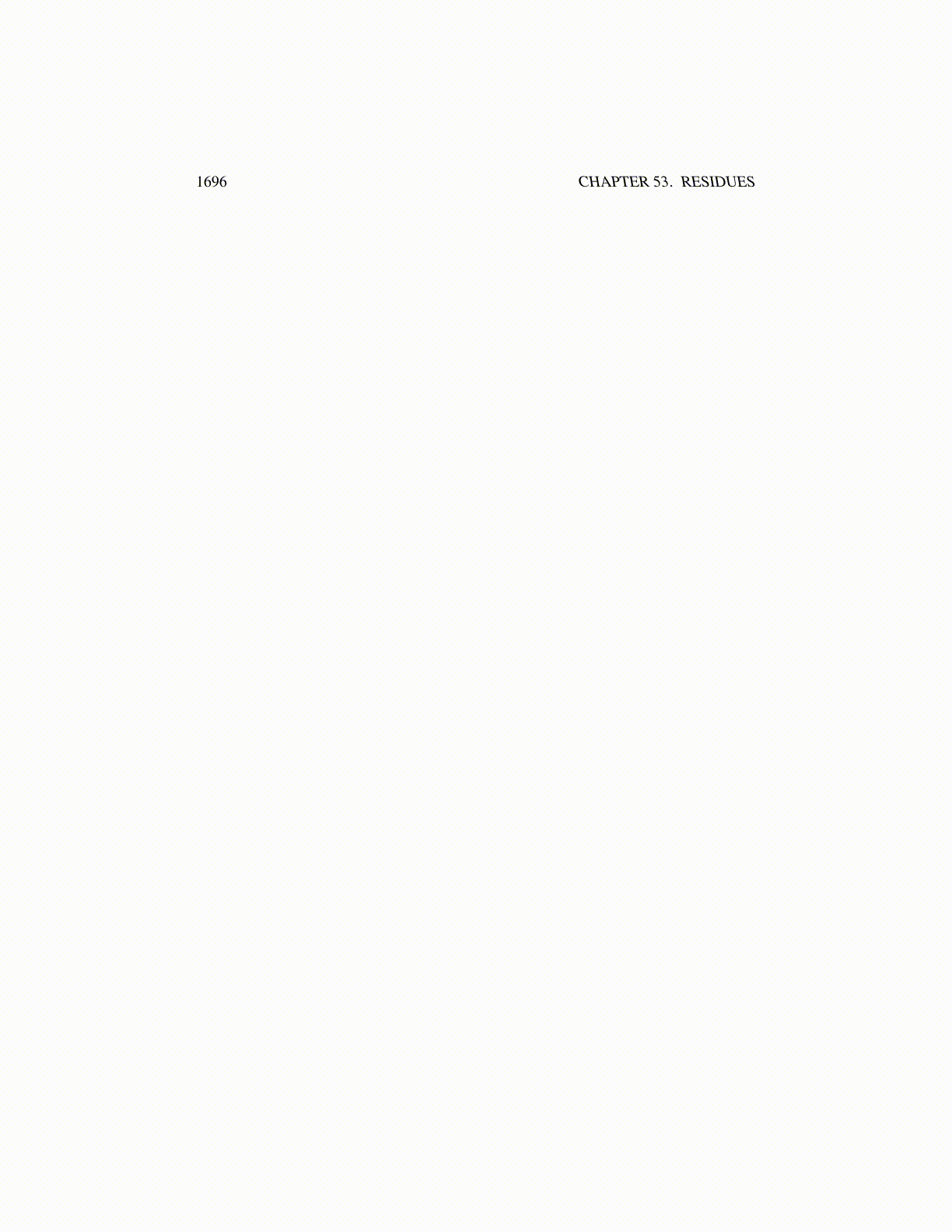
1696 CHAPTER 53. RESIDUES
53.3 Exercises1. Example 53.2.7 found the integral of a rational function of a certain sort. The tech-
nique used in this example typically works for rational functions of the form f (x)g(x)
where deg(g(x)) ≥ deg f (x)+ 2 provided the rational function has no poles on thereal axis. State and prove a theorem based on these observations.
2. Fill in the missing details of Example 53.2.13 about IN → 0. Note how important itwas that the contour was chosen just right for this to happen. Also verify the claimsabout the residues.
3. Suppose f has a pole of order m at z = a. Define g(z) by
g(z) = (z−a)m f (z) .
Show
Res( f ,a) =1
(m−1)!g(m−1) (a) .
Hint: Use the Laurent series.
4. Give a proof of Theorem 53.1.1. Hint: Let p be a pole. Show that near p, a pole oforder m,
f ′ (z)f (z)
=−m+∑
∞k=1 bk (z− p)k
(z− p)+∑∞k=2 ck (z− p)k
Show that Res( f , p) =−m. Carry out a similar procedure for the zeros.
5. Use Rouche’s theorem to prove the fundamental theorem of algebra which says thatif p(z) = zn+an−1zn−1 · · ·+a1z+a0, then p has n zeros in C. Hint: Let q(z) =−zn
and let γ be a large circle, γ (t) = reit for r sufficiently large.
6. Consider the two polynomials z5 + 3z2− 1 and z5 + 3z2. Show that on |z| = 1, theconditions for Rouche’s theorem hold. Now use Rouche’s theorem to verify thatz5 +3z2−1 must have two zeros in |z|< 1.
7. Consider the polynomial, z11+7z5+3z2−17. Use Rouche’s theorem to find a boundon the zeros of this polynomial. In other words, find r such that if z is a zero of thepolynomial, |z|< r. Try to make r fairly small if possible.
8. Verify that∫
∞
0 e−t2dt =
√π
2 . Hint: Use polar coordinates.
9. Use the contour described in Example 53.2.7 to compute the exact values of thefollowing improper integrals.
(a)∫
∞
−∞
x
(x2+4x+13)2 dx
(b)∫
∞
0x2
(x2+a2)2 dx